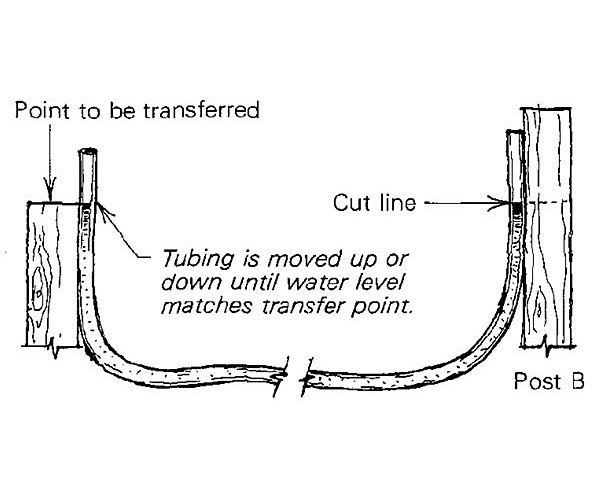
Let’s say you’ve just put four posts in the ground for a sun deck and now need to cut them all off at the same height. What do you do? If you have a builder’s level or transit you’re all set, but if you don’t, this water level is a very simple and inexpensive way to solve the problem. It consists of any length of clear plastic tubing (or a hose with clear plastic extensions at the ends) and works on the principle that water seeks its own level.
First, fill the tubing with water, leaving a foot or two of air at the ends, and hold one end against the point to be transferred, as shown in the drawing. Another worker takes the other end of the tubing to the first post to be cut off (post B in the drawing).
The person at post B holds the tubing against it while the person at the other end moves the tubing up or down until the water level in the tubing matches the level of the point to be transferred. When this has been accomplished, the waterline in the tubing at post B will be the same as at the transfer point.
Always transfer levels from the original point to lessen accumulated error. Remove all the air bubbles from the tubing — they can affect accuracy. Remember that no part of the tubing should be higher than the ends.
This tool is useful in many ways on a building site. We use it whenever we need to transfer a level point farther than the length of a carpenter’s level.
—David Barker, Gardiner, ME
Edited and illustrated by Charles Miller
From Fine Homebuilding #6
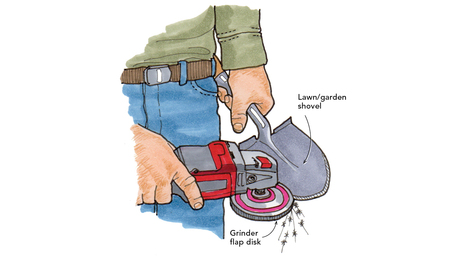
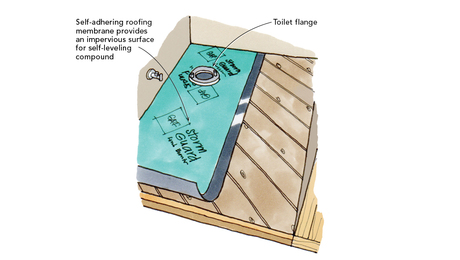
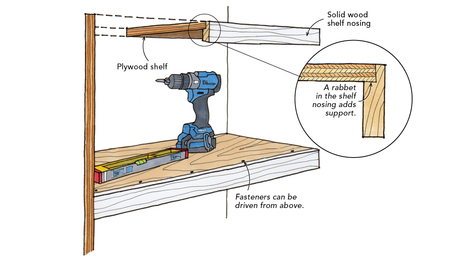
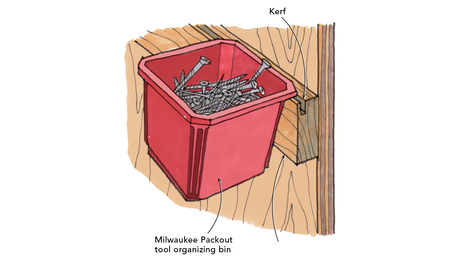
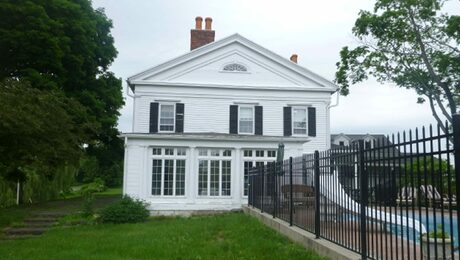
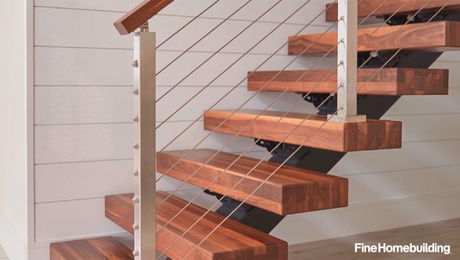







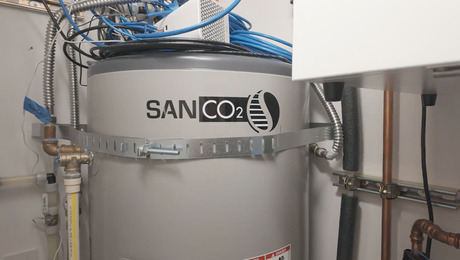
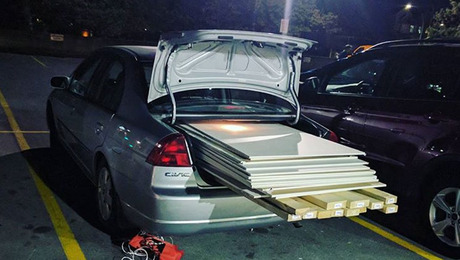
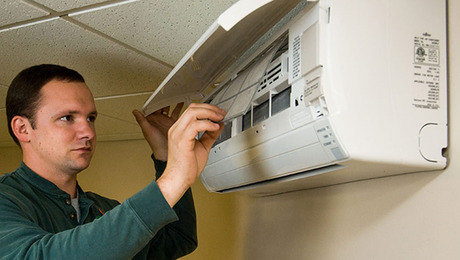
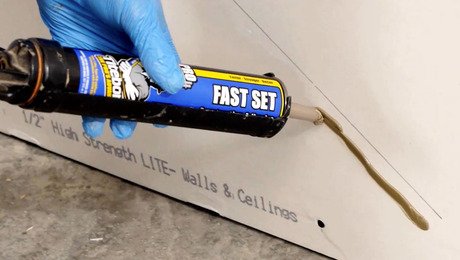






View Comments
I used this method to transfer top-of-post elevations from one end of a 120 foot fence to the other. Worked fine, with one modification. I filled the tube with red gatorade, which was much easier to see than clear water in a clear tube. Also found that it's difficult to pour into a long tube, but easy to suck it in.
Surface tension creates a U-shaped meniscus in each end of the tube. For accuracy, the two people need to agree on using either the upper or lower reading.
Some food dye in each end helps, especially in bright sunlight.
Bob Guthrie, Sydney Australia
Another advantage of the water level over the laser or transit approach - it can go around corners. I've used one when excavating a pond so I could find where the final water level would be all around. It seemed appropriate.
Almost 50 years ago in southeast Asia, I saw one of these water levels for the first time. Over the years since then, I could have often made good use of one, just not often enough that I’ve made a piece of transparent hose part of my regular tool kit. They can be handy even when you’re leveling over a small area. A few years ago, I set a small crooked tree trunk, forked at the top, to use as a mail box post and had trouble marking the level to saw off. A short piece of hose off my sprayer did the trick. Thanks to David Barker for calling back attention to this valuable tool.
below is a link to a quite good article on the water level. His emphasis on removing air bubbles can't be overstated. It takes more time removing air bubbles than using the level, but is a must. Other good tips on use.
http://www.deckmagazine.com/products/tools-equipment/making-and-using-a-water-level_o
Be sure to be patient. If the connecting hose is not large diameter, it can take several seconds for the water to settle down to the equilibrium point, especially over a long run.
About meniscus-reading, and also long and around-corner readings--make a scratch pad map, and with a second set of readings starting from the far/opposite end rather than the starting place, keep notes on the map of any variations (rather than making multiple marks on the various posts/locations) as you work your way back. Decide which readings are best if any differ, or consider compromises.
In dealing with the meniscus/surface tension issue, try mixing in some non-sudsing [dishwasher] soap. This will reduce the surface tension and shrink the meniscus.
The explanation is an over-simplification. The water level is indeed equal at both ends of the tube, but not necessarily at the level, you need to work form. So the est step is to measure up or down to find your working height. I half-fill a gallon jug with water. That's my desired level. I place the jug where the existing (desired) level is. A tube inserted in the top of the jug and suctioned to fil becomes the standard for any place I put it. It's great for checking any number of points under a settling crawl space, or basement, for example. Using the jug, a second person is not needed.